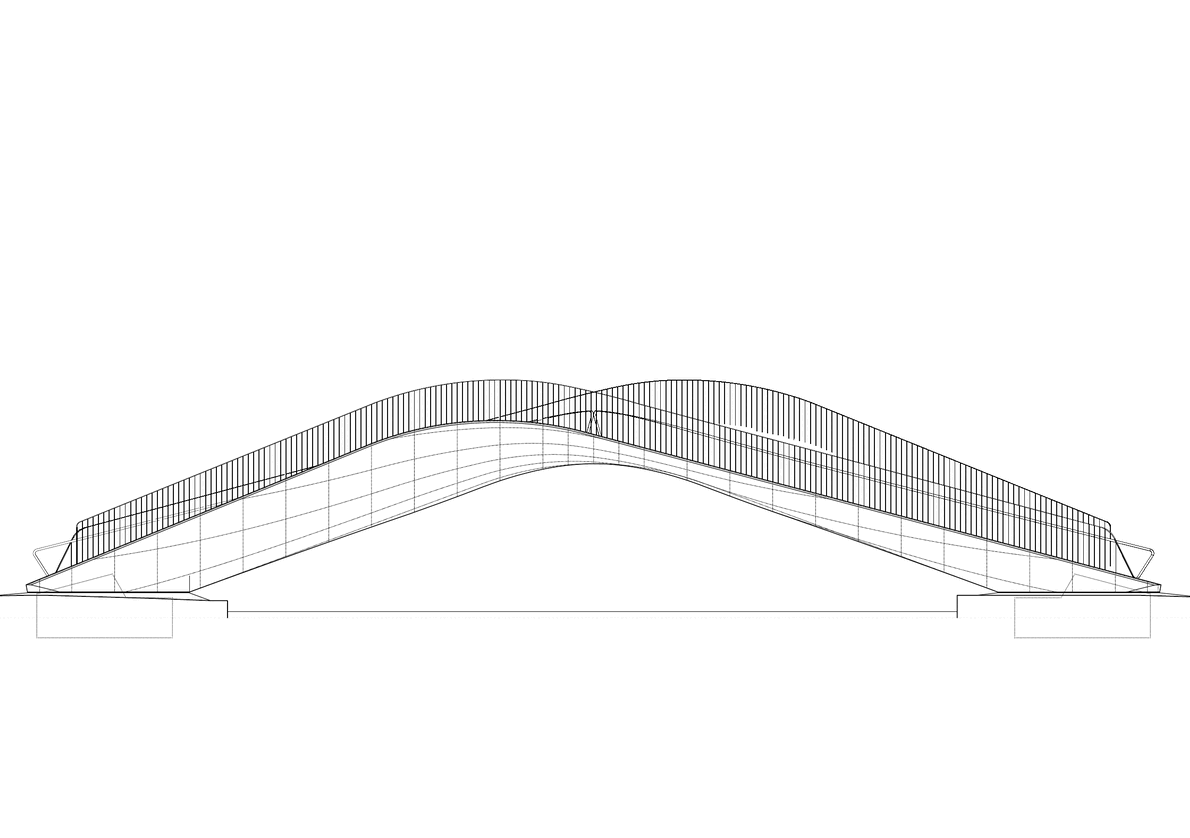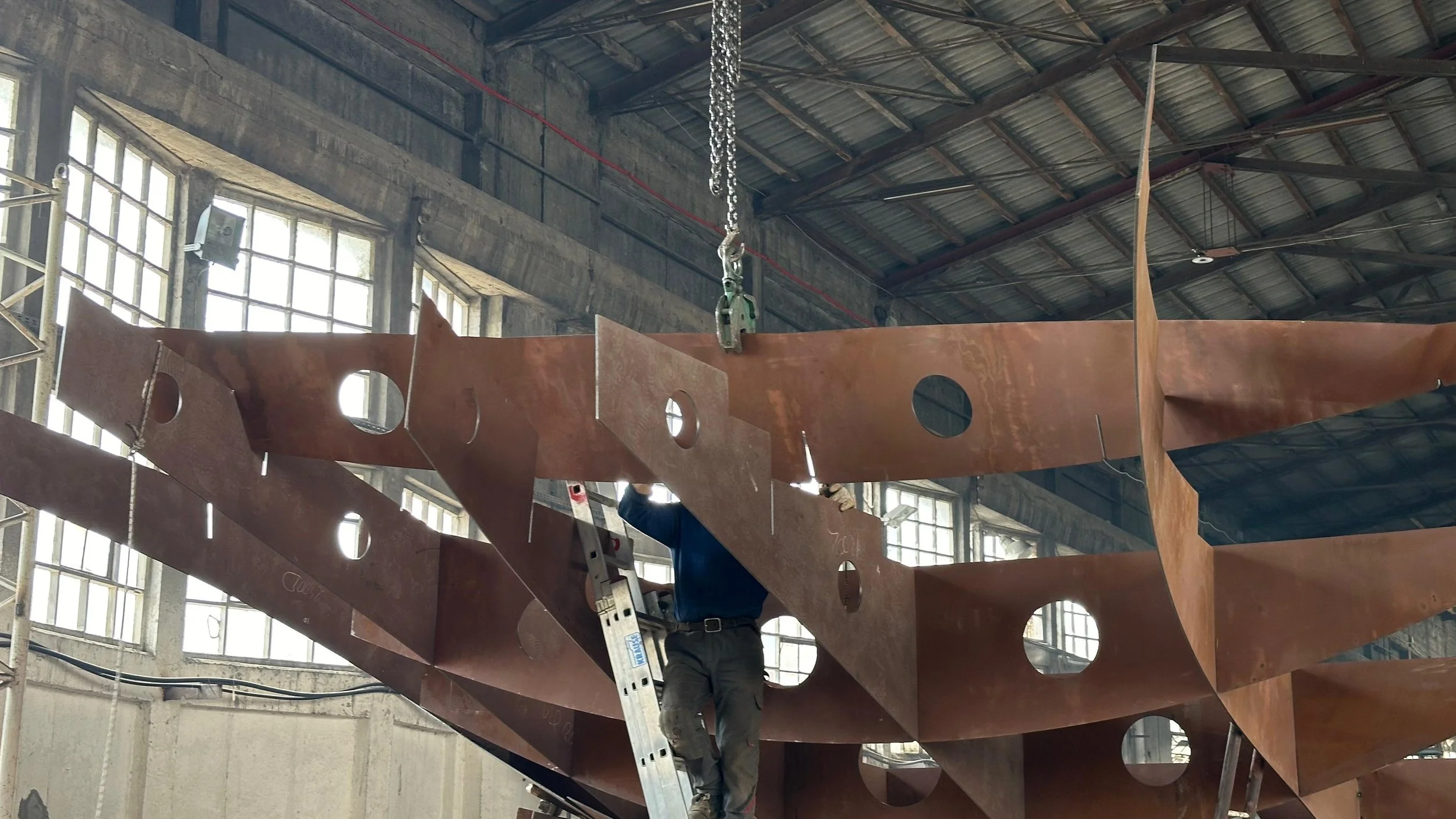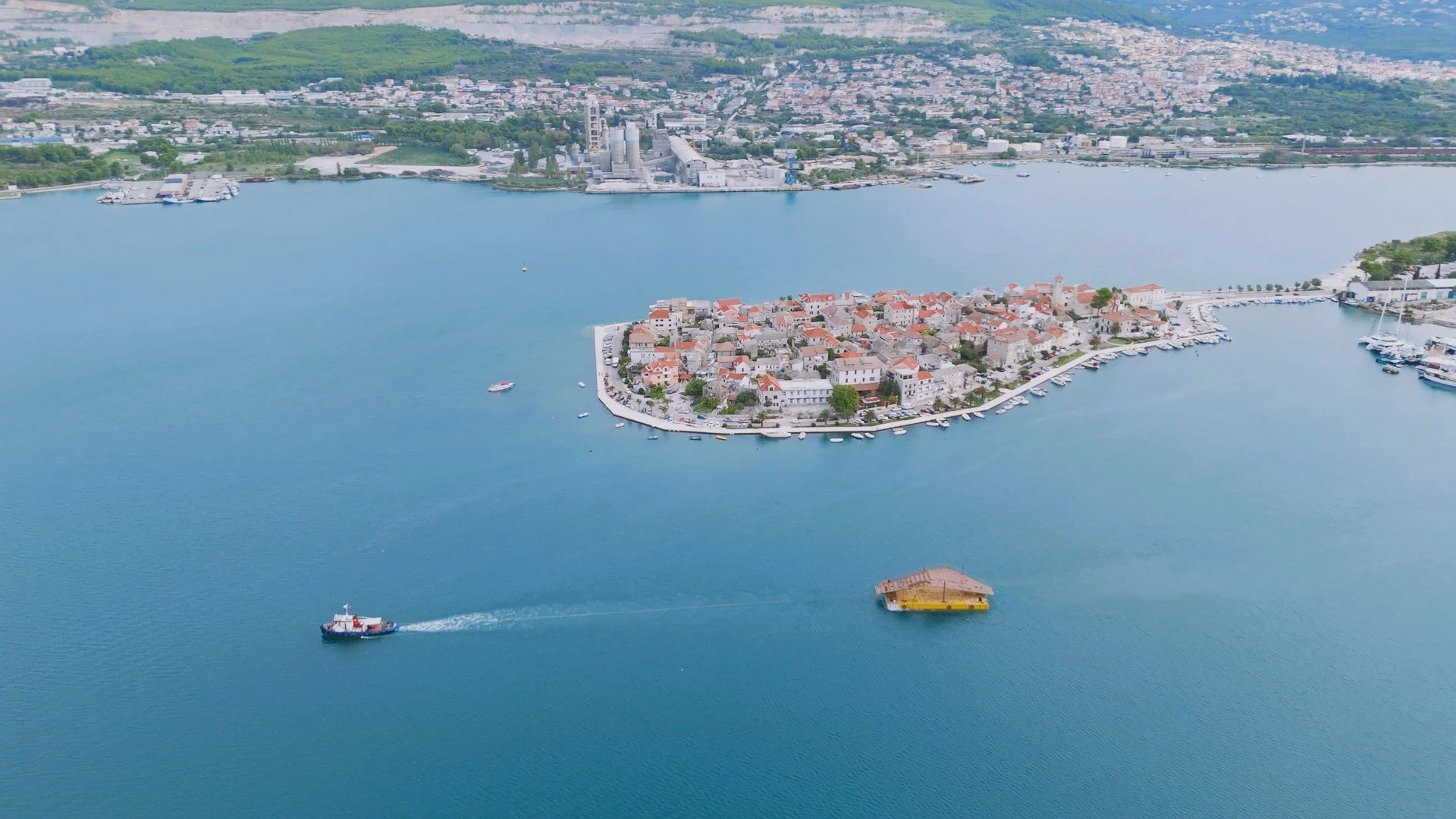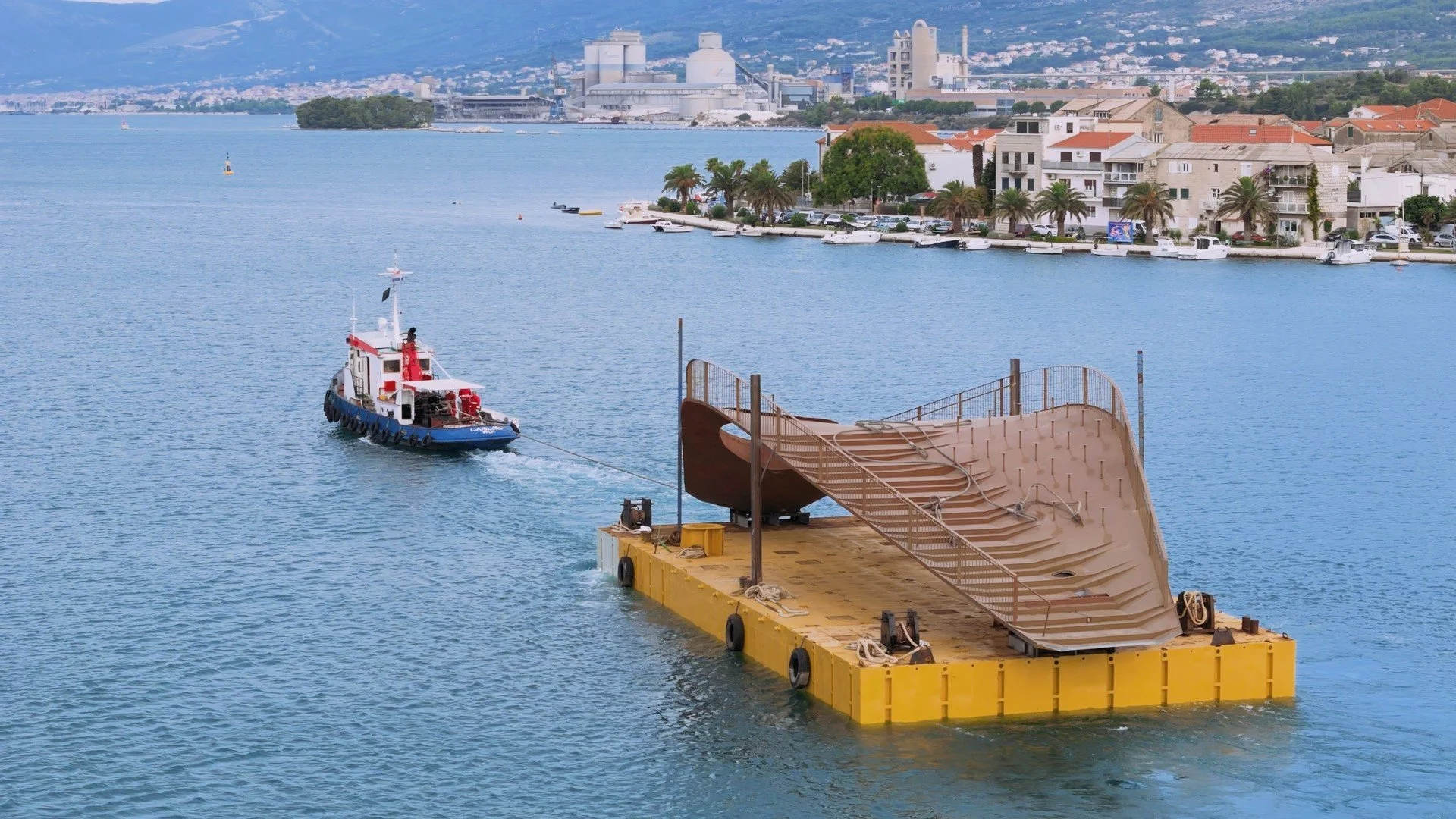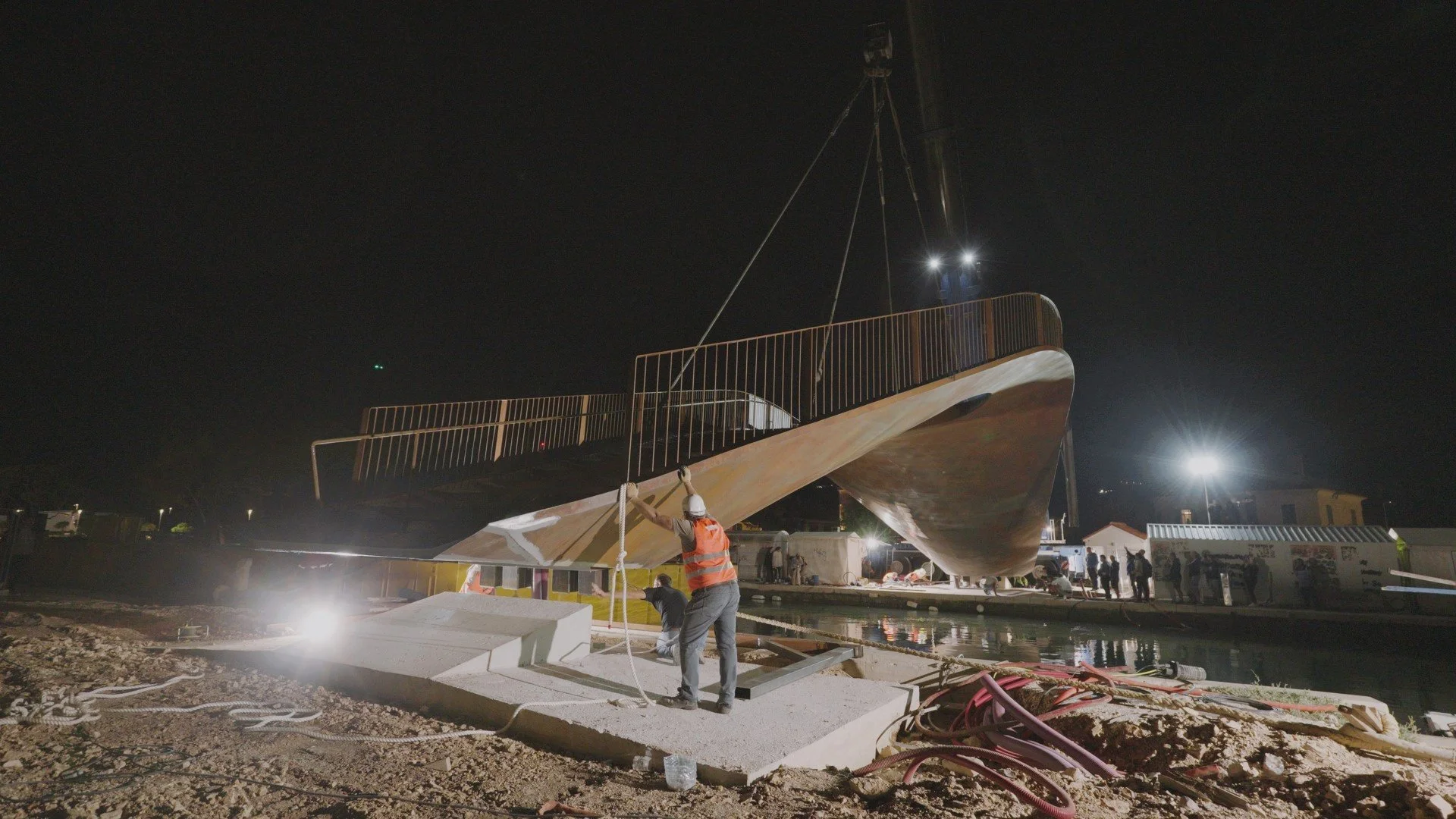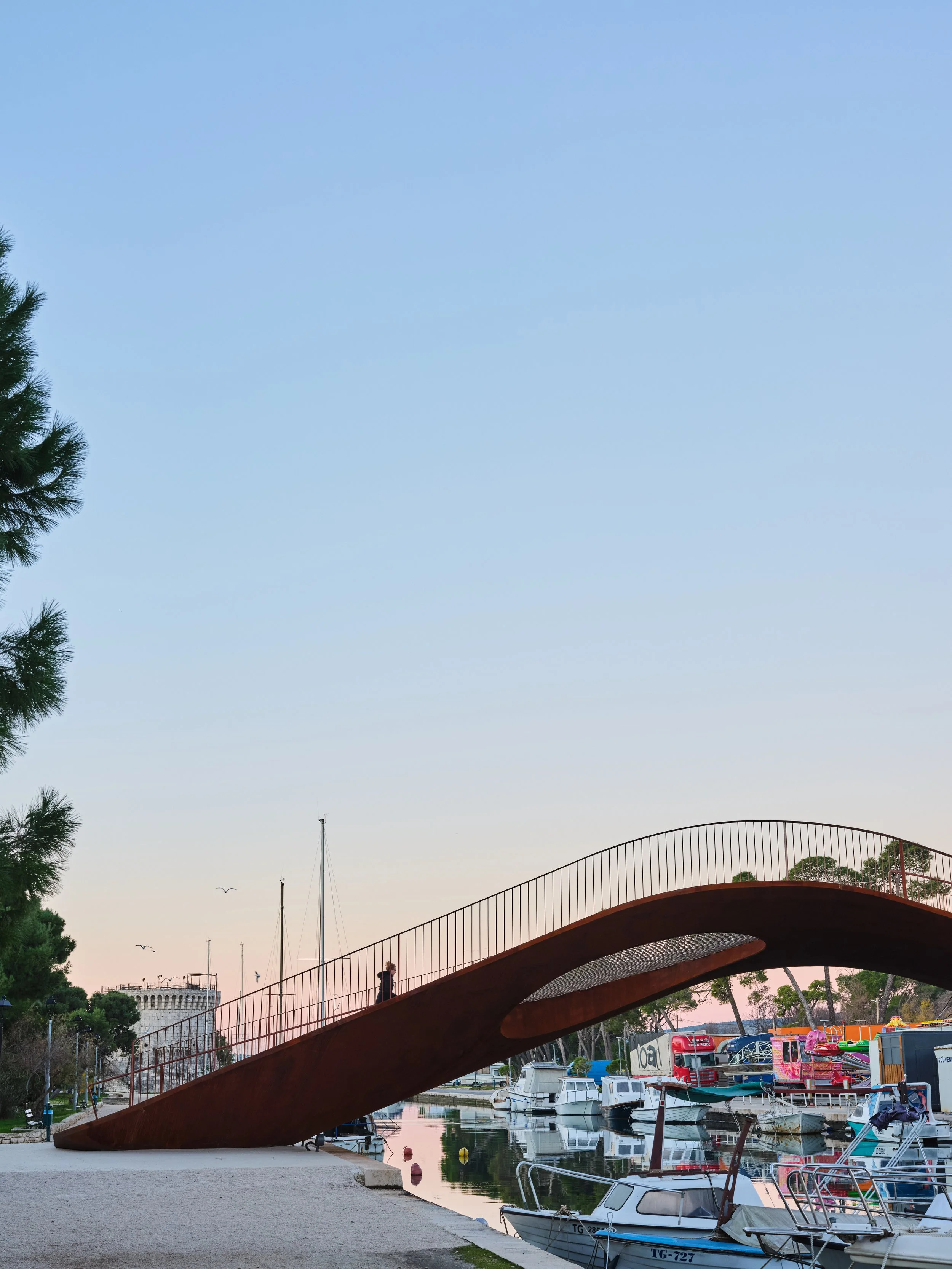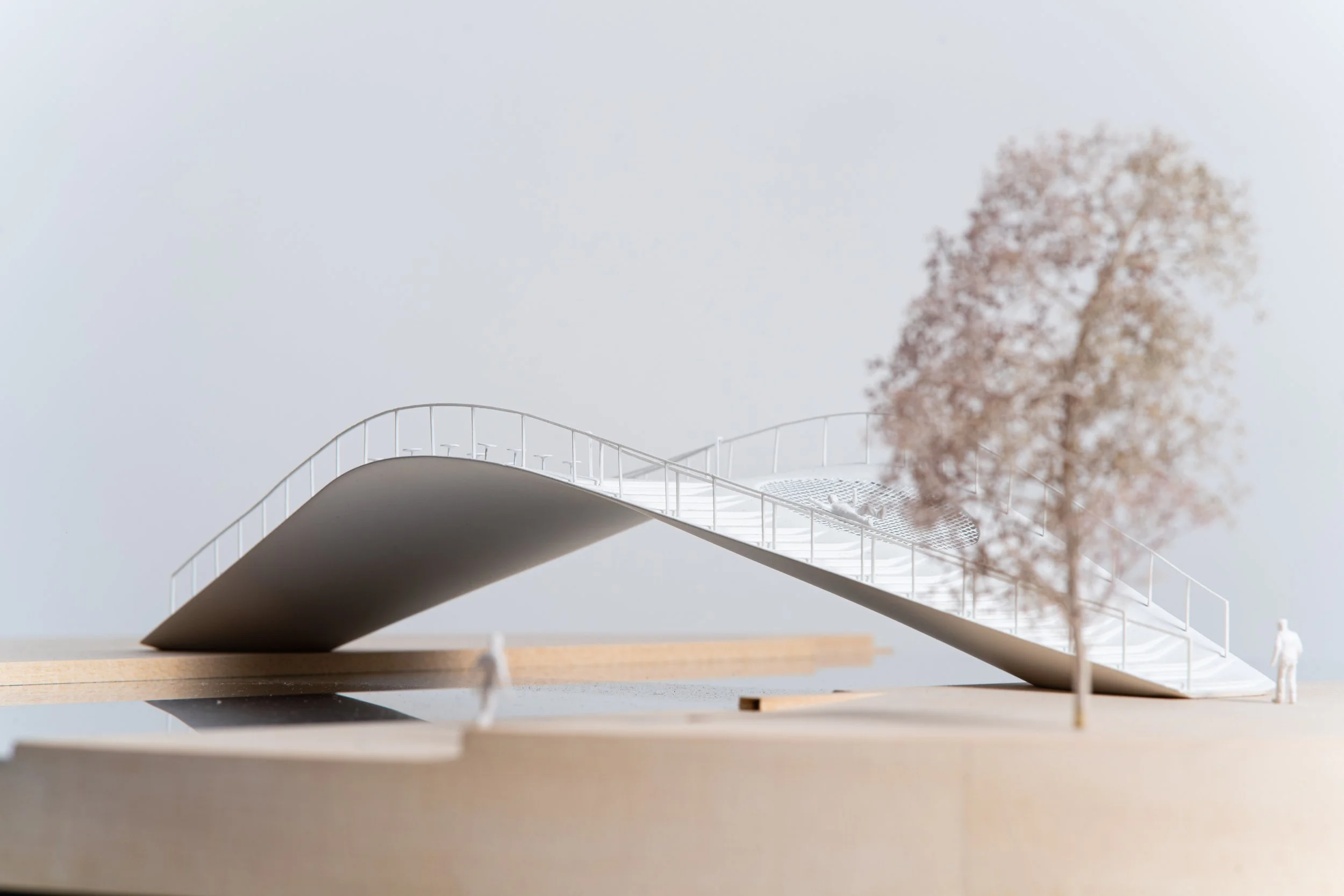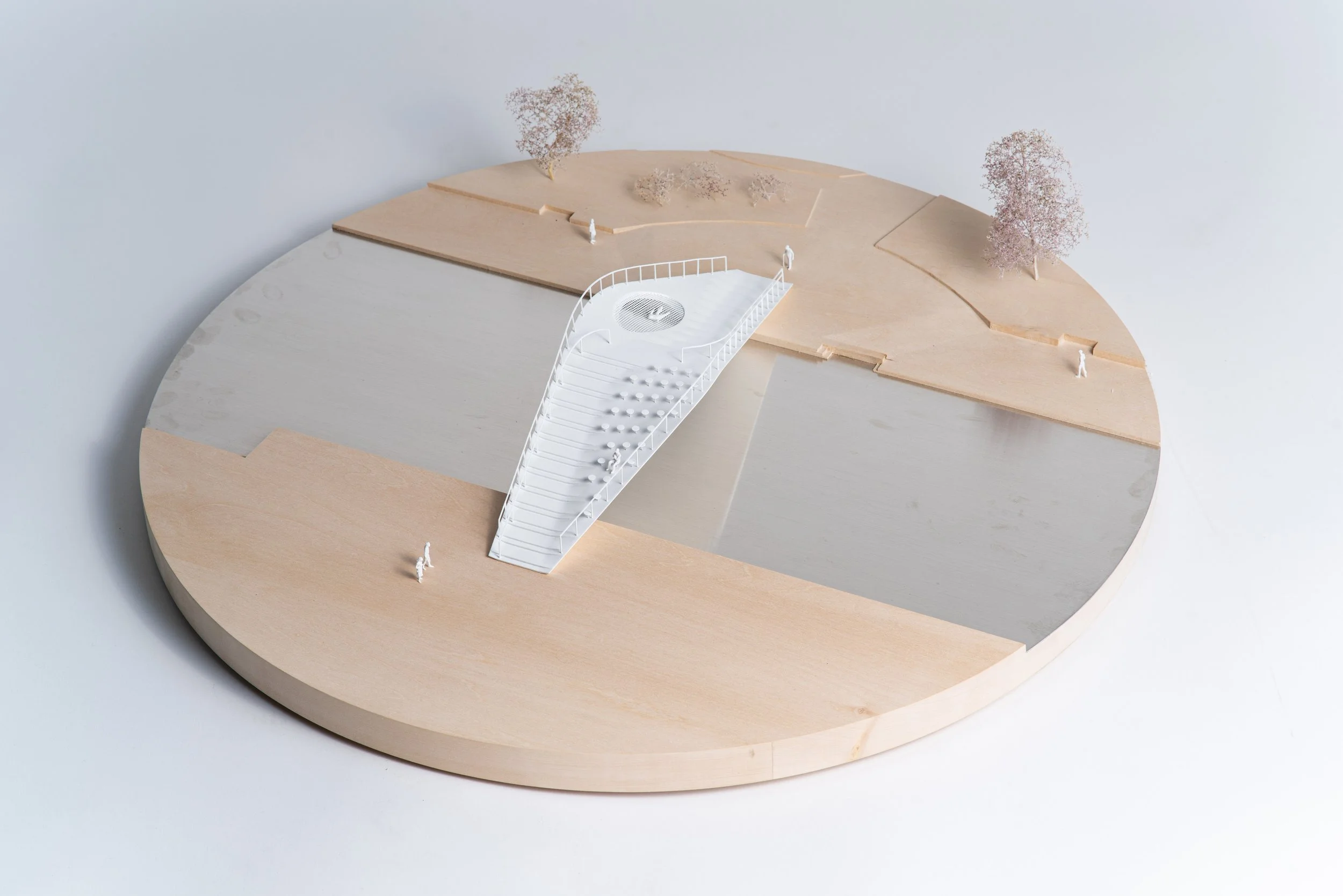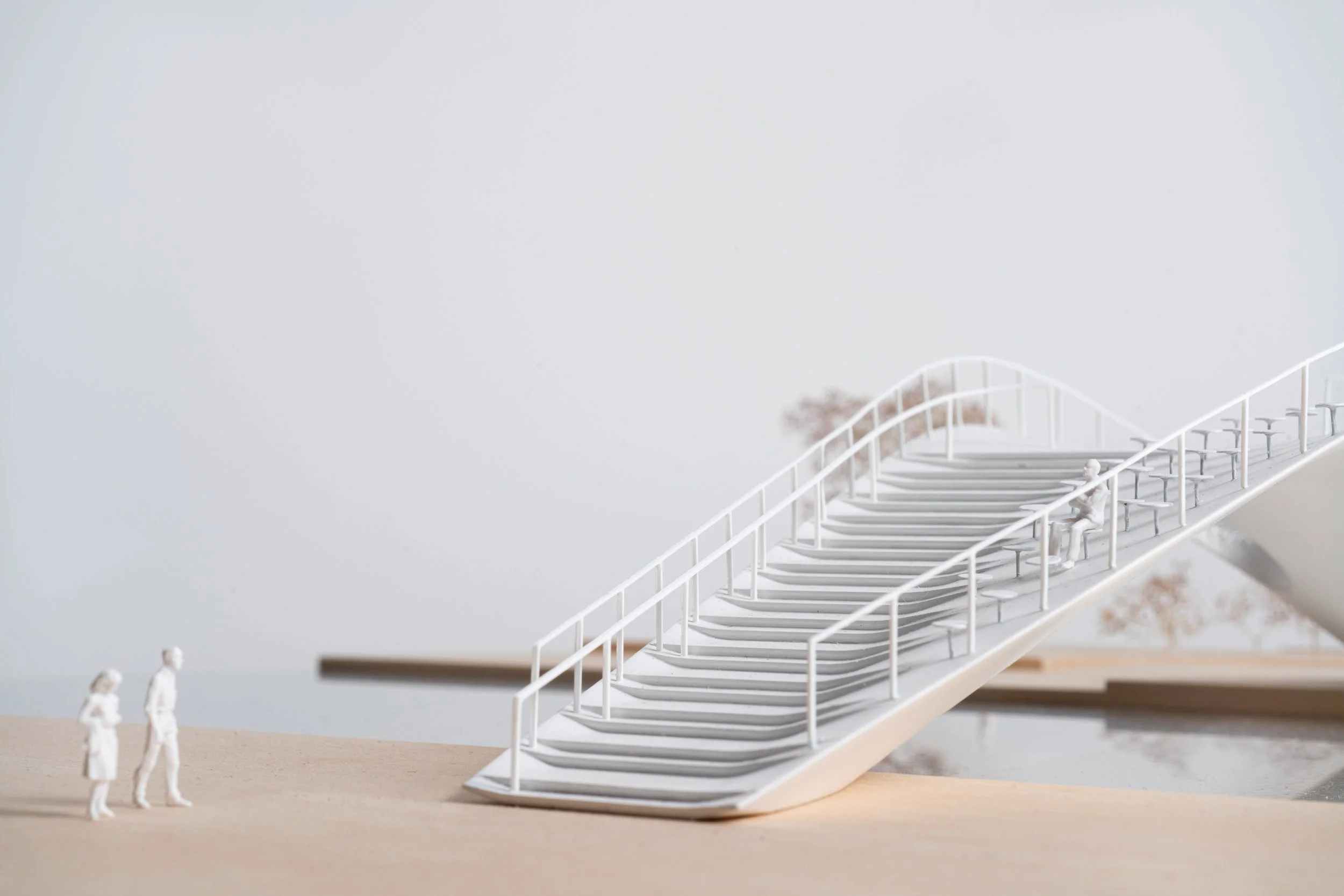m-MOS / Most preko Foše Trogir
Prostor pješačkog mosta zauzima perifernu poziciju uže gradske jezgre grada Trogira. Stari drveni most zamijenit će čelična ljuskasta konstrukcija čelika (tipologija brodske konstrukcije) promjenjivog presjeka blago asimetričnog oblika hiperboličnog paraboloida. Blage promjene smjera omogucavaju manji nagib stubista, kao i citanje razlicitih vizura pri kretanju. Uz trajektorije kretanja dodaju se elementi za zadrzavanje (mreza i sjedala). S obzirom na tradiciju brodogradnje u Trogiru i okolici, odabirom materijala i konstrukcije iznimno koristi se lokalni know how i ostvaruje se rješenje koje nije agresivna intervencija u prostor, ali koje istovremeno posjeduje jasan karakter i identitet. Osvjetljenjem se dodatno naglašava kretanje i krivulja plohe. Cijeli se most projektira i izrađuje iz jednog segenta i na suptilan se način dovodi u odnos sa povijesnim okruženjem. Rješenje nadilazi ulogu utilitarne konstrukcije za prelaženje morskog kanala i postaje društveni punkt i mjesto novog gradskog identiteta.
The area of the pedestrian bridge occupies a peripheral position in the inner core of the city of Trogir. The old wooden bridge will be replaced by a steel shell structure (ship construction typology) with a variable cross-section of a slightly asymmetrical hyperbolic paraboloid shape. Slight changes in direction enable a smaller slope of the stairs, as well as reading different sights while moving. In addition to the movement trajectories, elements for retention (net and seats) are added. Considering the tradition of shipbuilding in Trogir and the surrounding area, the selection of materials and construction makes exceptional use of local know-how and a solution is realized that is not an aggressive intervention in the space, but which at the same time has a clear character and identity. Lighting additionally emphasizes the movement and curve of the surface. The entire bridge is designed and built from one segment and is brought into relation with the historical environment in a subtle way. The solution goes beyond the role of a utilitarian construction for crossing the sea channel and becomes a social point and place of a new city identity.



